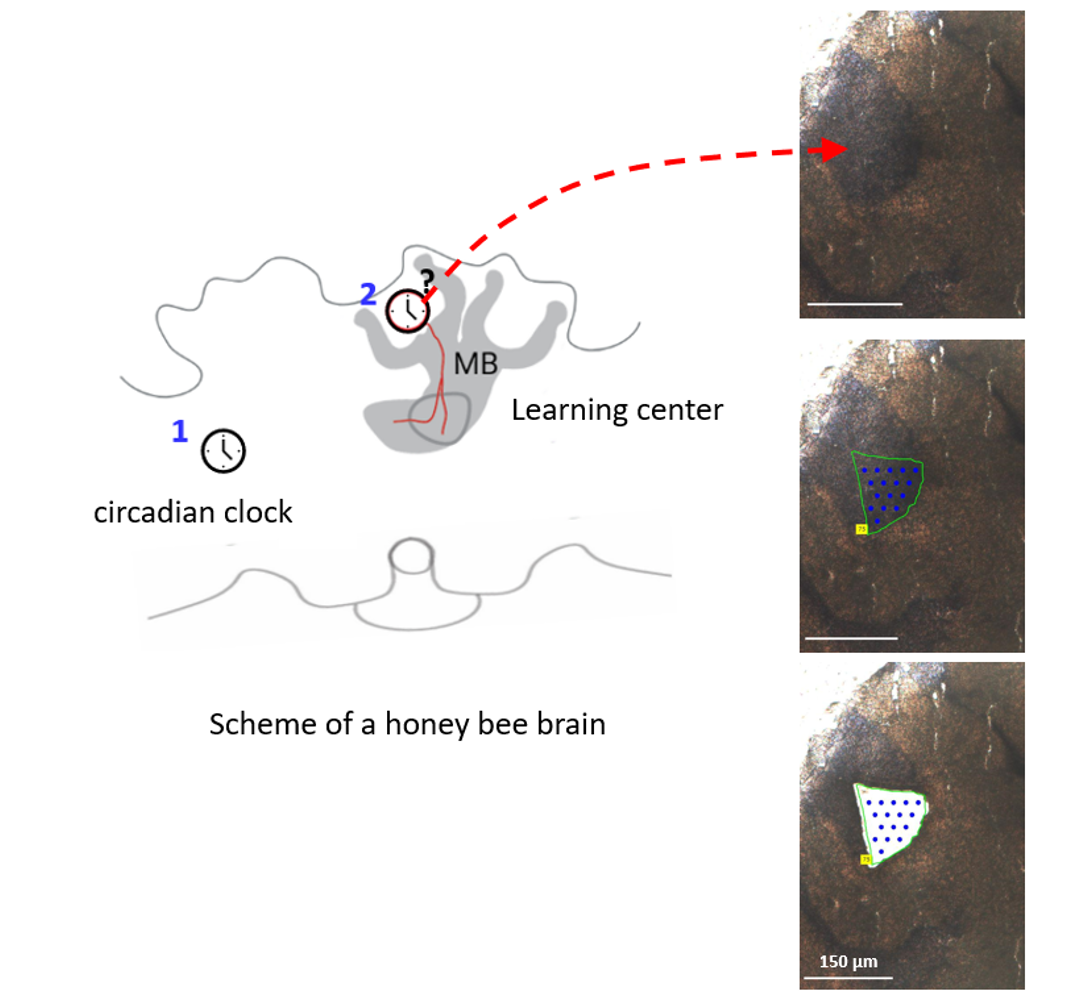Studying time-place memory in honey bees
Do you remember the time when you visited a charming place and made some fond memories? You might be able to recall quite a few details from that moment even today, isn’t it? Remembering such details is however not only about revisiting your happy spot but also about remembering crucial events in life that are associated with a certain time and place. For instance, in your daily routine, you remember when and how to go to work, or when does your regular canteen serves food and how to reach there!
It might sound trivial, but it was just a century ago in 1910, when August Forel reported an interesting observation. He found honey bees were visiting his breakfast table every day at the same time. Subsequently, he also found that even his unrewarded breakfast table was welcoming the bees at the same time. This was the first time in science when it was proposed that animals might have a memory of time.
This time-place memory (TPM) tells an animal when to secure resources (like searching for food or mate) and avoid predators. This capability allows increasing one’s survival chances while reducing energy expenditure in a circadian (Latin “circa”, about and “diem”, day) environment. Evidence indicates TPM depends on the internal circadian system. For our model organism, the honey bee, we hypothesize that TPM suggests a connection/link in the brain between the internal circadian clock system and the learning and memory center. However, details of such a connection remain elusive.
In our experiments, we train bees to artificial sugar-water feeders at different times of the day under close to natural conditions, quite similar to Forel’s observations. To study the molecular mechanisms underlying TPM in bees performing their natural behaviour we use the immediate early genes (IEGs). Now, let’s ask how!
An increase in neuronal activity triggers rapid and transient expression changes of IEGs (e.g. Egr-1 and cFos). As their name suggests, these IEGs then regulate the expression of their downstream genes which are either inducible transcription factors or direct effector proteins known to play roles in neuronal homeostasis and synaptic plasticity (i.e. learning and memory). So, just by tracking the IEG activity, we get to study the neural details inside the brain of these insects, more specifically in their learning and memory center, the mushroom bodies, MBs (paired cup-shaped structures, in bees).

Previous work in Dr. Axel Brockmann’s lab on time-trained bees has shown that even when the bees were prevented from flying out at the training time, IEG expression still started to get upregulated at the time of feeder training. Interestingly this upregulation of the IEG occurred in only a specific population of the MBs, the so-called small Kenyon cells (sKCs). Based on this finding we proposed that the sKCs might be involved in TPM.
Currently, I am trying to find out whether there are learning and memory-related genes in the sKCs that show rhythmic oscillation and also if the sKCs are themselves clock cells. For that purpose, I selectively collect these tiny sKCs, using Laser Capture Microdissection (LCM). This technique allows me to precisely cut out this cell population on brain sections and collect these cells for gene expression studies.
I hope that my study will provide us with reliable information about the possible connections between the internal clock and learning/memory.
For more information:
https://www.ncbs.res.in/faculty/axel
Shah A, Jain R, Brockmann A. Egr-1: A Candidate Transcription Factor Involved in Molecular Processes Underlying Time-Memory. Front Psychol. 2018 Jun 5;9:865. doi: 10.3389/fpsyg.2018.00865. PMID: 29928241; PMCID: PMC5997935










0 Comments